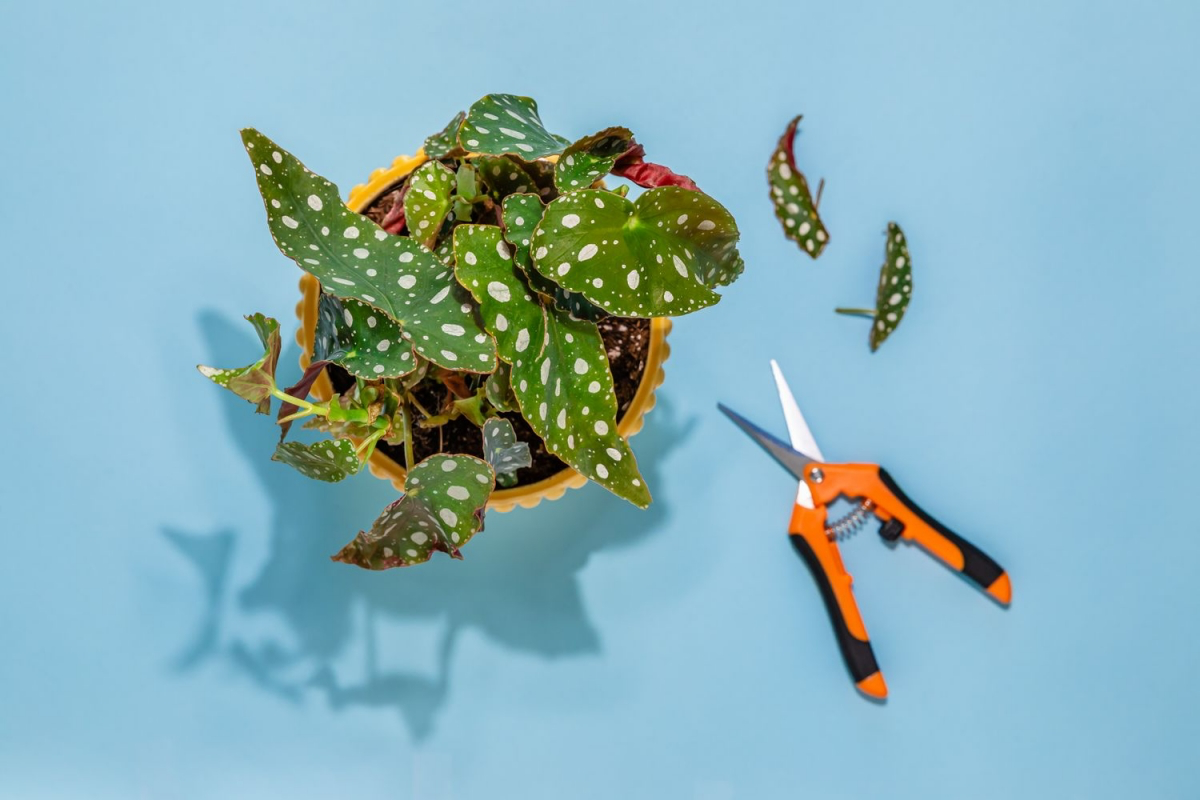The Polka Dot Begonia Handbook: Complete Plant Care Guide
In the realm of indoor gardening, the Polka Dot Begonia stands as a captivating gem, its leaves adorned with charming spots like nature’s own polka-dotted couture. As we embark on this botanical journey, we’ll explore the vibrant universe of Polka Dot Begonias, understanding their types, care requirements, and the joy they bring to our homes. Let’s explore the world of the dainty Polka Dot Begonia plant What is a Polka Dot Begonia? Imagine a plant that effortlessly blends elegance and whimsy, a Polka Dot Begonia. Scientifically known as Begonia maculata, this houseplant showcases lush, asymmetrical leaves adorned with silver-white polka […]
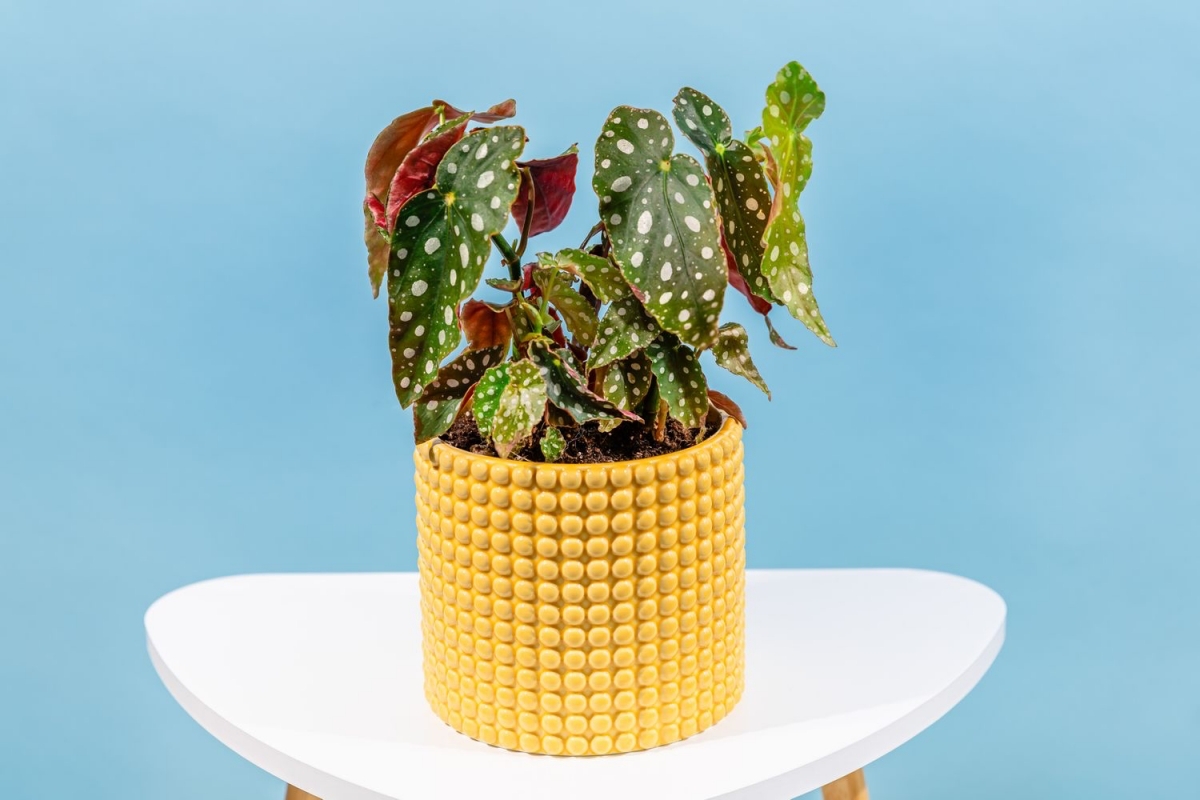
In the realm of indoor gardening, the Polka Dot Begonia stands as a captivating gem, its leaves adorned with charming spots like nature’s own polka-dotted couture. As we embark on this botanical journey, we’ll explore the vibrant universe of Polka Dot Begonias, understanding their types, care requirements, and the joy they bring to our homes.
Let’s explore the world of the dainty Polka Dot Begonia plant

What is a Polka Dot Begonia?
Imagine a plant that effortlessly blends elegance and whimsy, a Polka Dot Begonia. Scientifically known as Begonia maculata, this houseplant showcases lush, asymmetrical leaves adorned with silver-white polka dots, resembling a masterpiece painted by Mother Nature herself. It’s the kind of green companion that adds a touch of artistry to your indoor garden.
This houseplant showcases lush, asymmetrical leaves adorned with silver-white polka dots
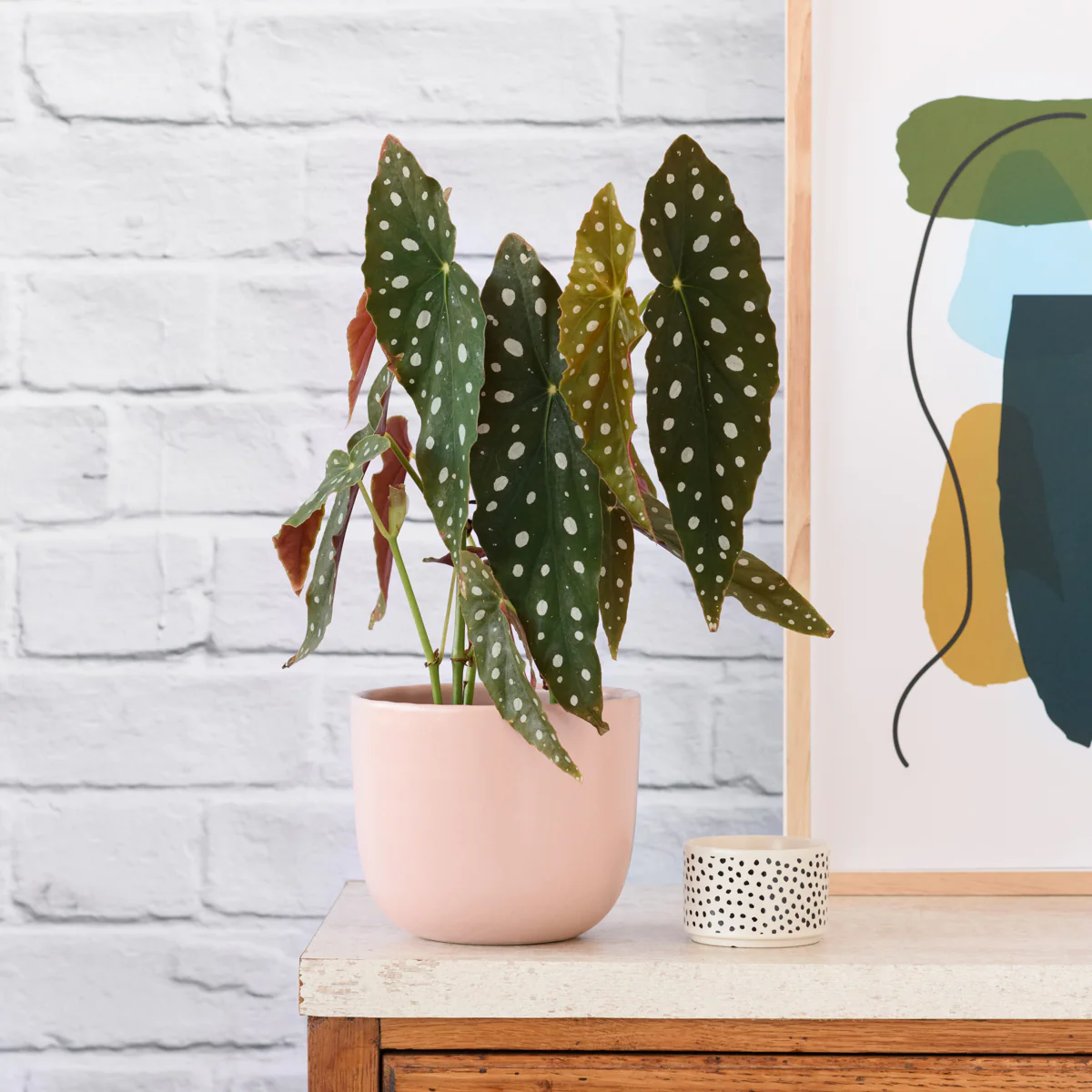
What are the Different Types of Polka Dot Begonias?
Visualize a gallery of Polka Dot Begonias, each with its unique charm. While Begonia maculata is the star, here are some intriguing varieties to consider:
- Begonia maculata ‘Wightii’: Envision a Polka Dot Begonia with angelic silver-white spots adorning its emerald leaves, creating a striking contrast.
- Begonia maculata ‘Tamaya’: Picture a compact beauty with dense foliage, featuring vivid green leaves kissed by silver dots.
- Begonia maculata ‘Curly Fireflush’: Imagine a Polka Dot Begonia with a twist – curly-edged leaves adorned with fiery red undersides, truly a showstopper.
- Begonia maculata ‘My Special Angel’: Picture a charming variant with dainty leaves sporting intricate silver patterns.
Each type offers its unique allure, allowing you to curate your indoor garden with the Polka Dot Begonia that resonates with your aesthetic.
Each type offers its unique characteristics and allure
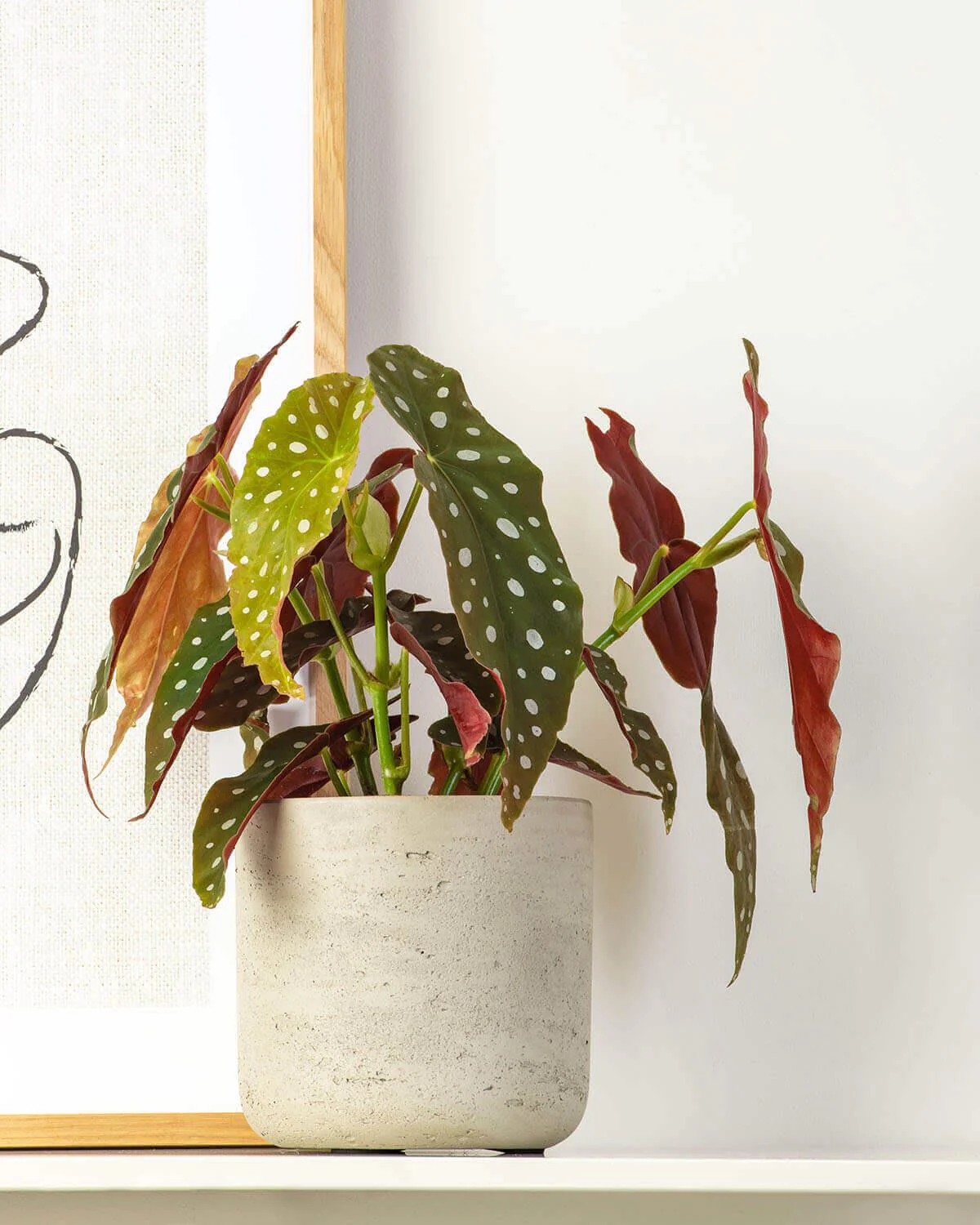
Who Should Get a Polka Dot Begonia?
If you’re someone who appreciates the charm of a living work of art, the Polka Dot Begonia deserves a place in your heart and home. Whether you’re a creative spirit, a devoted plant parent, or simply seeking an elegant companion to brighten your living space, this begonia is a perfect choice.
This plant is an elegant companion that will brighten your living space
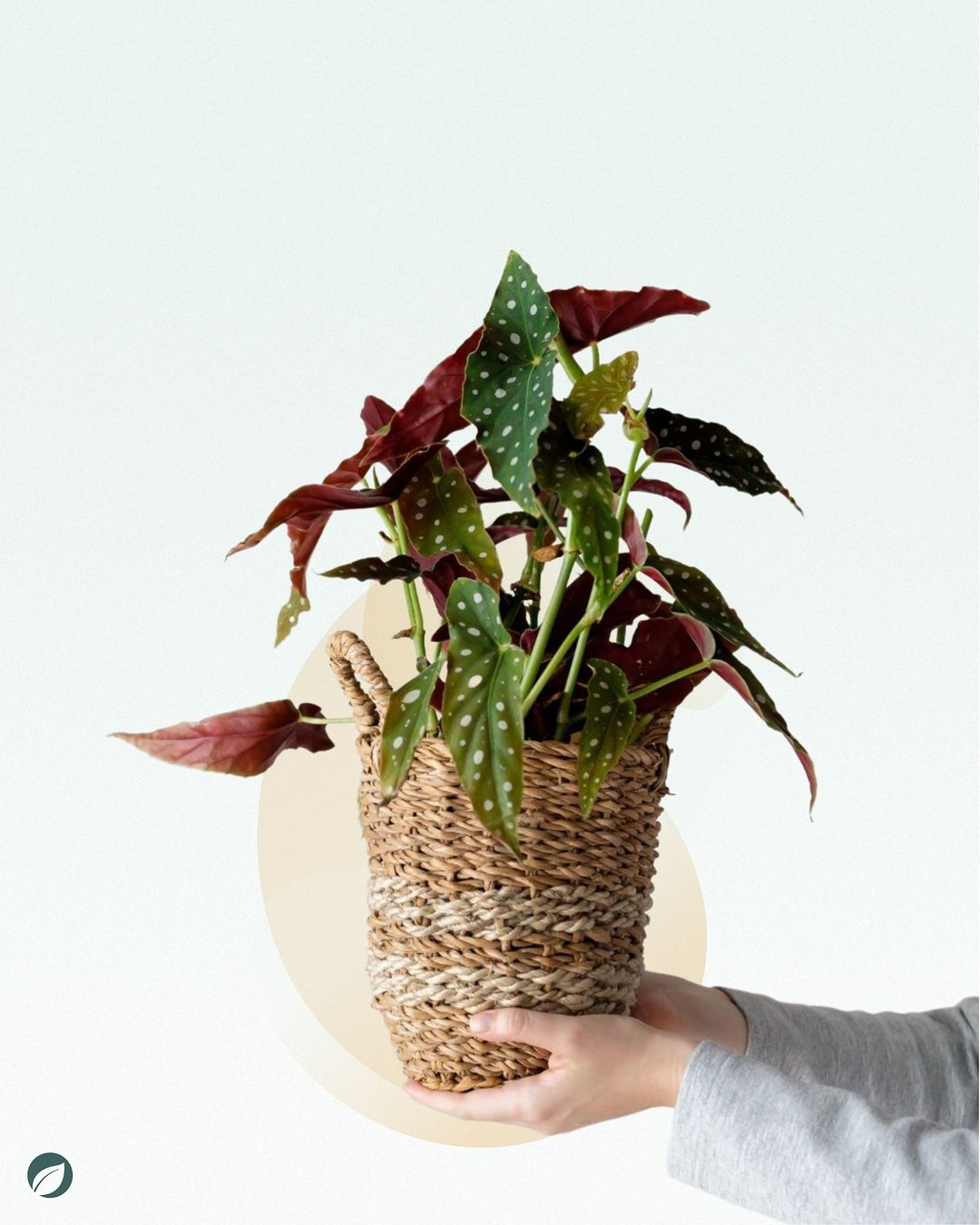
What are the Benefits of Owning a Polka Dot Begonia?
The Polka Dot Begonia doesn’t just add beauty to your home; it offers an array of advantages:
- Aesthetic Delight: Imagine your space adorned with the Polka Dot Begonia’s intricate foliage, elevating the ambiance and making every day feel like an artistic exploration.
- Air Purification: Picture your begonia working diligently to purify the air, removing harmful toxins and enhancing indoor air quality.
- Therapeutic Presence: Envision nurturing your Polka Dot Begonia as a calming, meditative practice, fostering a sense of connection with nature.
- Low Maintenance: Think of a plant that’s forgiving and adaptable, making it suitable for both seasoned plant enthusiasts and beginners alike.
This houseplant is suitable for both seasoned plant enthusiasts and beginners alike

Who Should Avoid This Plant?
While the Polka Dot Begonia is a versatile and accommodating plant, there are a few scenarios where caution is advised:
- Pet Owners: If you have curious pets, particularly cats and dogs, it’s essential to keep the Polka Dot Begonia out of their reach. Some begonia varieties can be toxic if ingested, potentially causing digestive issues. Safety first for your furry friends!
If you have curious pets, particularly cats and dogs, keep the Polka Dot Begonia out of their reach

Is a Polka Dot Begonia a Hard Plant to Take Care Of?
Caring for a Polka Dot Begonia may seem as intricate as its leaves, but fret not – with the right guidance, it becomes a delightful experience. Let’s explore the art of nurturing this begonia in detail.
Caring for a Polka Dot Begonia may seem more complicated than it actually is
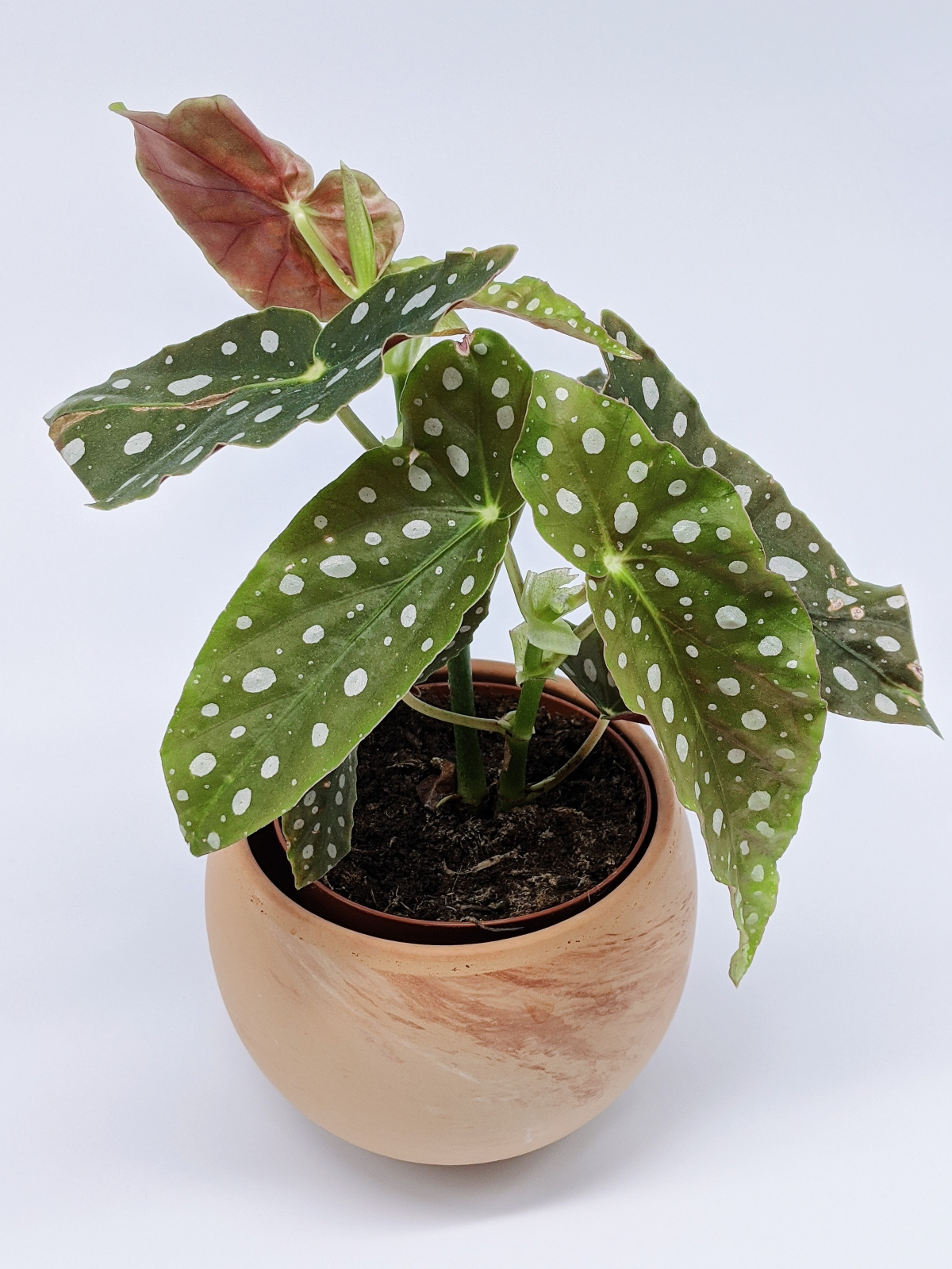
How to Take Care of a Polka Dot Begonia
Imagine stepping into the role of a skilled gardener, tending to your Polka Dot Begonia with confidence and grace. Here’s a comprehensive look at each aspect of its care, ensuring it thrives under your watchful eye:
Watering
When it comes to watering your Polka Dot Begonia, envision yourself as a nurturing guardian, providing just the right amount of moisture to keep your plant thriving:
- Moderate Moisture: Picture the top inch of soil as your guide – water your Polka Dot Begonia when it feels dry to the touch. Overwatering can lead to root rot, so it’s essential to exercise restraint.
- Water Quality: Consider using distilled water or allowing tap water to sit overnight before use to allow chlorine to dissipate. Your begonia will appreciate clean, chlorine-free water.
- Adjust for Seasons: During the growing season (spring and summer), imagine that your Polka Dot Begonia is thirstier and may require more frequent watering than in the dormant season (fall and winter). Always tailor your watering routine to the plant’s needs.
Your begonia will appreciate clean, chlorine-free water
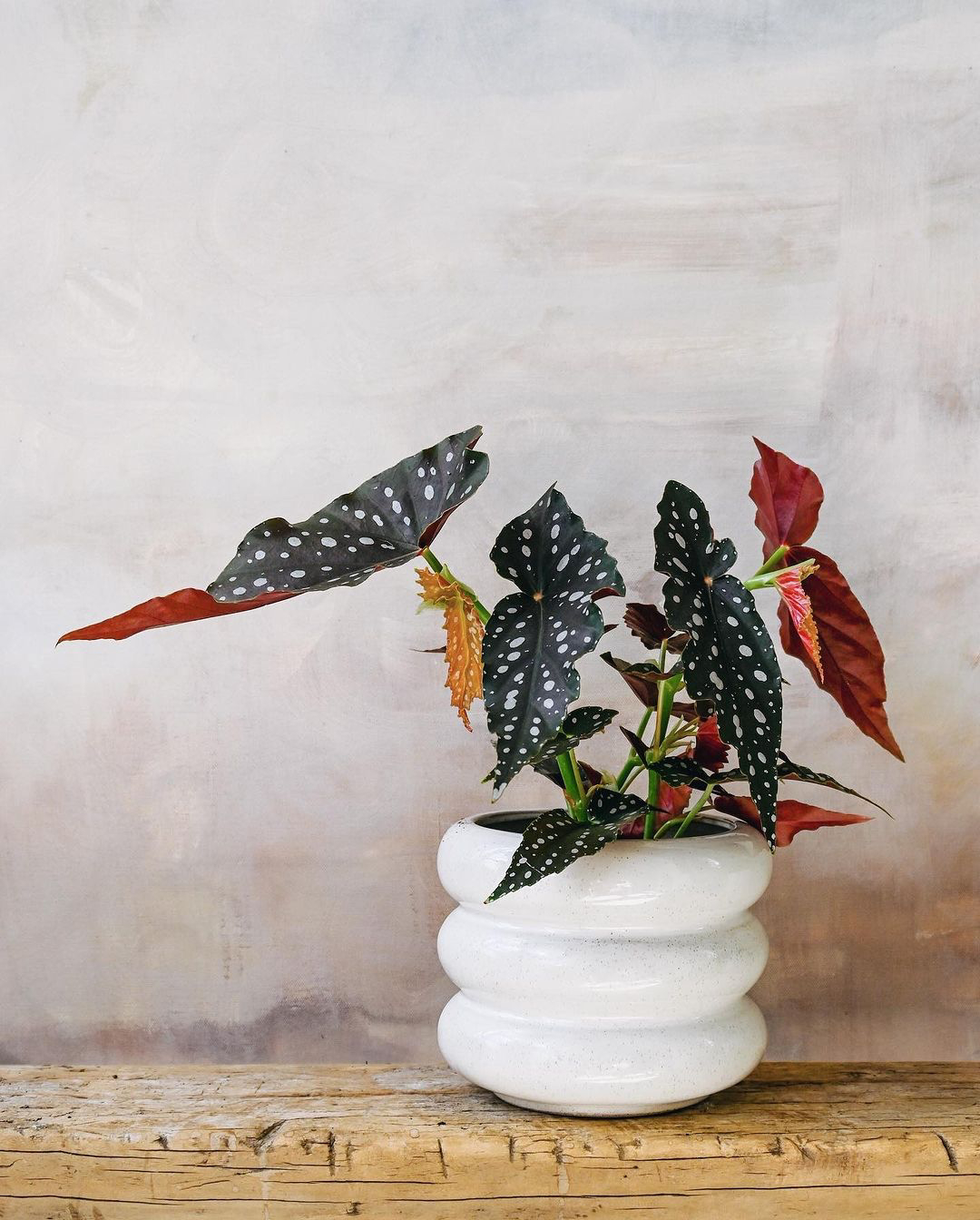
Light
Proper lighting is crucial for your Polka Dot Begonia’s well-being. Imagine finding the ideal spot where your begonia can thrive:
- Bright Indirect Light: Envision your begonia basking in bright, indirect light, ideally by a north or east-facing window where it receives filtered sunlight. Too much direct sun can scorch its delicate leaves.
- Low Light Tolerance: While it thrives in bright light, the Polka Dot Begonia can adapt to lower light conditions, although its growth may slow. It’s the ideal low-maintenance companion for shadier spots in your home.
The Polka Dot Begonia can adapt to lower light conditions, although its growth may slow

Temperature
Maintaining the right temperature for your Polka Dot Begonia is crucial for its overall health and growth:
- Comfortable Temperatures: Imagine a cozy environment for your begonia, with indoor temperatures kept between 65°F to 75°F (18°C to 24°C). This temperature range provides the perfect setting for your plant’s well-being.
- Winter Rest: During the dormant winter months, picture your begonia enjoying slightly cooler temperatures, around 55°F (13°C). This period of rest encourages healthy growth when spring arrives. Protect your plant from cold drafts and temperature fluctuations during this time.
Protect your plant from cold drafts and temperature fluctuations

Fertilization
Just like us, your Polka Dot Begonia needs a balanced diet to thrive. Here’s how you can provide proper nutrition:
- Balanced Diet: Visualize feeding your Polka Dot Begonia with a balanced, water-soluble fertilizer diluted to half strength every 2-4 weeks during the growing season (spring and summer). This ensures your plant receives the necessary nutrients for robust growth.
- Reduce Fertilization: During the dormant season, reduce fertilization to allow your begonia to rest. This periodic break from fertilizing helps your plant conserve energy for future growth.
Feed your plant a balanced, water-soluble fertilizer diluted to half strength every 2-4 week
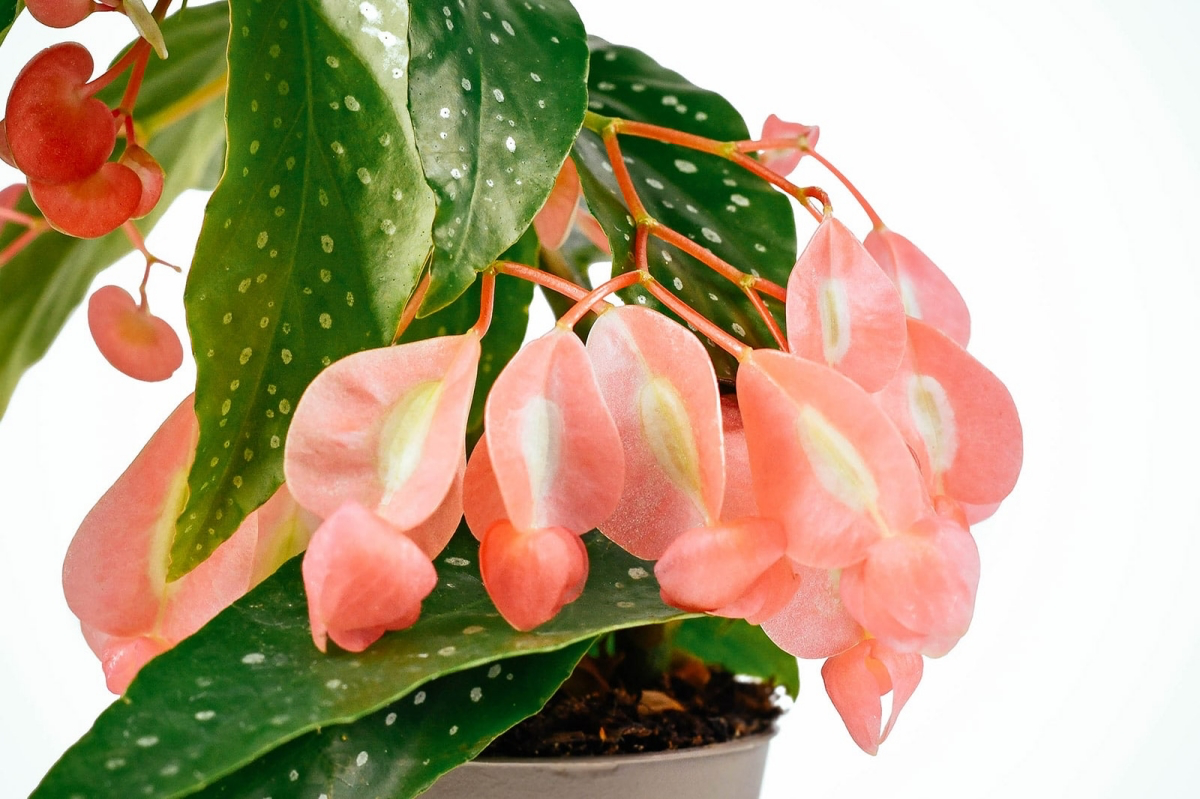
Placement
Choosing the perfect spot for your Polka Dot Begonia can significantly impact its well-being. Imagine the following:
- Versatile Locations: Visualize your Polka Dot Begonia thriving in various spots within your home. It’s adaptable and can complement different rooms, from the living area to the bedroom. The key is to ensure it’s not exposed to strong heating or cooling vents, which can stress the plant.
- Bathroom Haven: If you imagine a high-humidity haven, your bathroom can be an ideal spot for your begonia. Bathrooms often have increased humidity levels due to showers and baths. However, ensure there’s also adequate indirect light in the bathroom to meet your plant’s needs.
This houseplant is adaptable and can complement different rooms
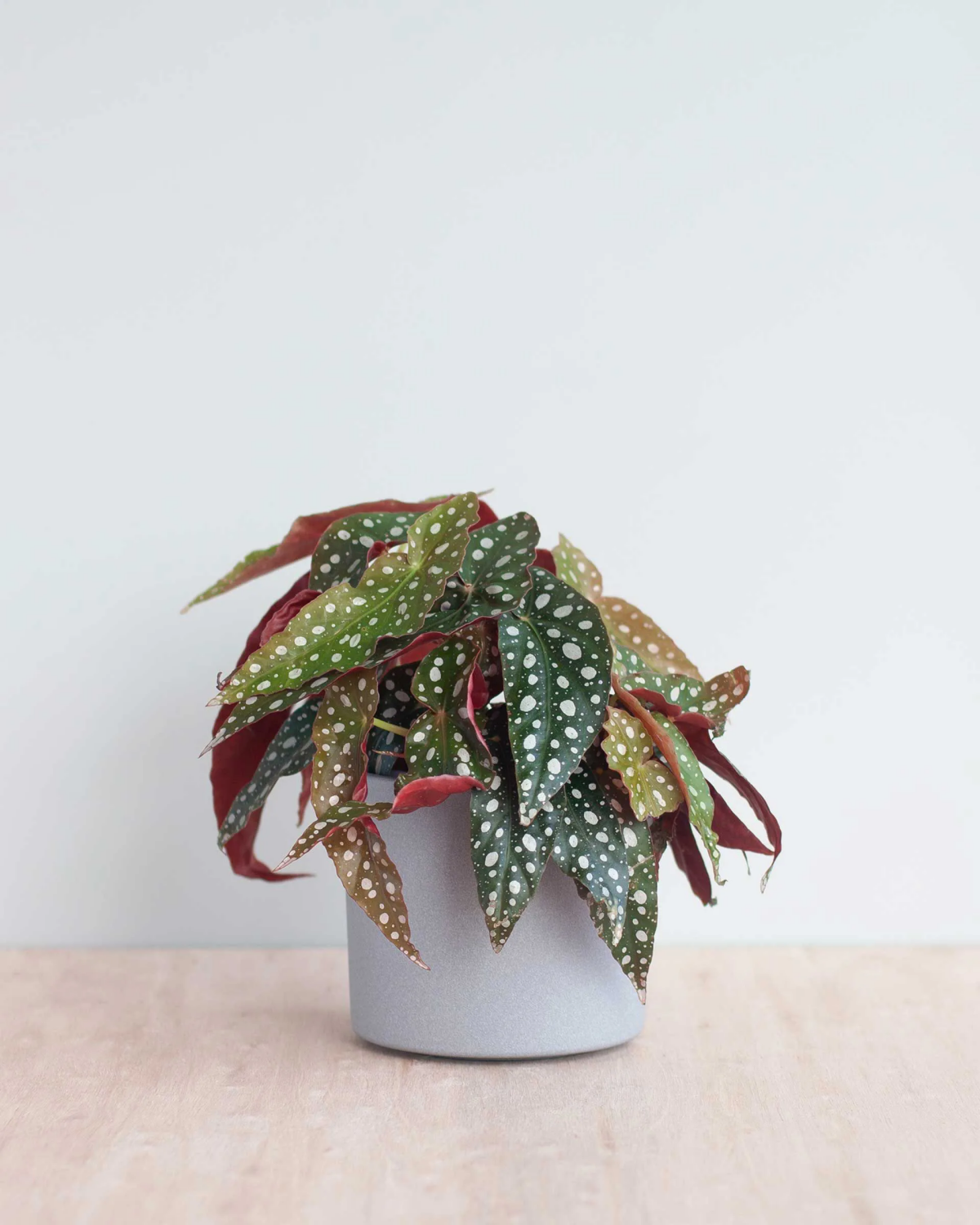
Humidity
Polka Dot Begonias appreciate moderate humidity levels. Here’s how you can provide the right humidity for your plant:
- Moderate Humidity: Picture maintaining moderate humidity levels in the room where your begonia resides. While it can tolerate average humidity, it appreciates occasional misting to boost humidity or placement near a tray of water. This creates a more humid microclimate around the plant, mimicking its native habitat.
This plant appreciates occasional misting to boost the humidity
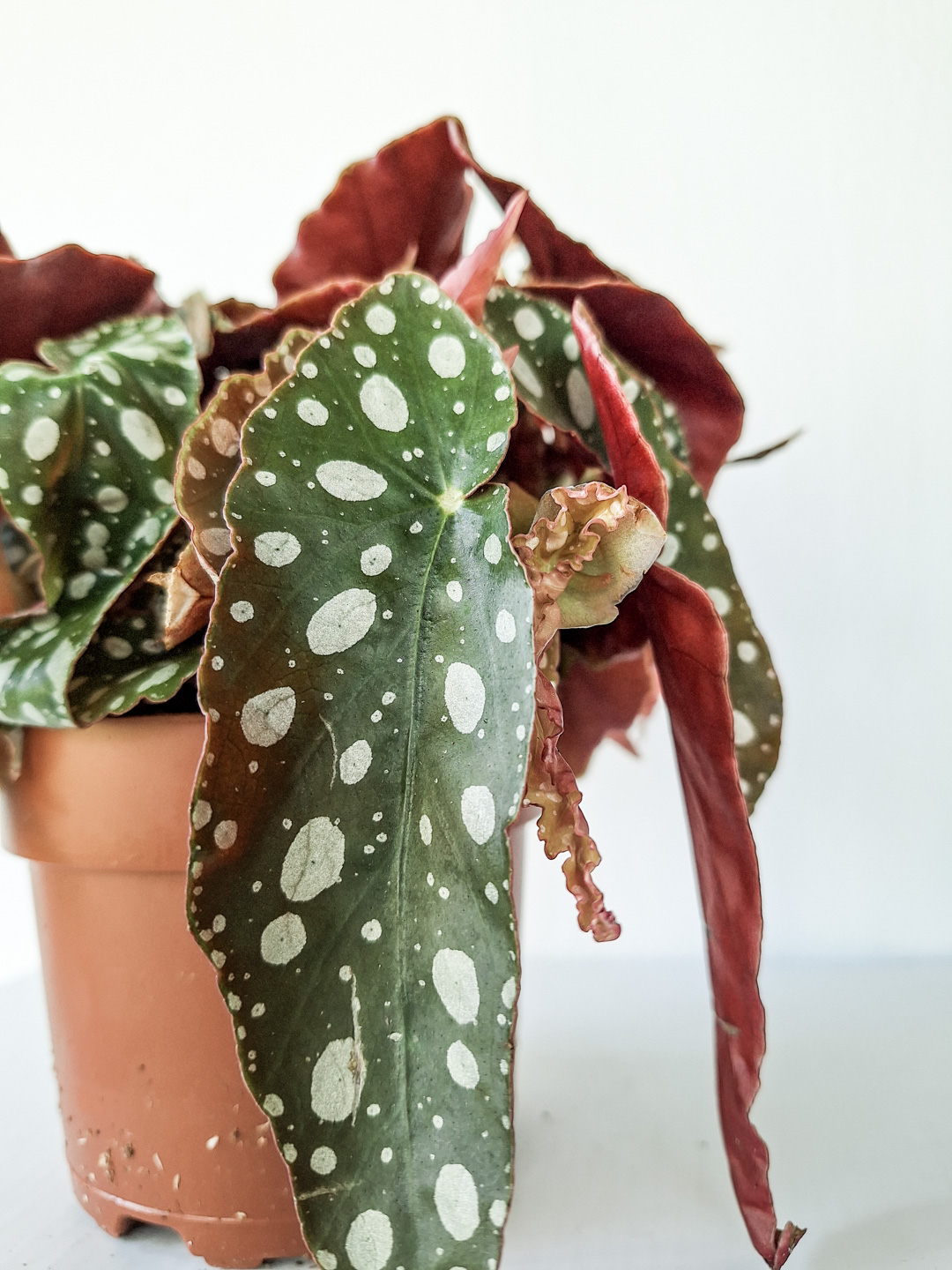
Soil
Selecting the right soil and understanding how to maintain it is essential for the health of your Polka Dot Begonia. Let’s explore this aspect in detail:
- Well-Draining Mix: Imagine the soil as the foundation of your plant’s home. To ensure your Polka Dot Begonia thrives, use a well-draining potting mix. A mixture of regular potting soil and perlite or orchid bark works well. This type of soil allows excess water to flow through and prevents your plant’s roots from becoming waterlogged, which can lead to root rot.
To ensure your Polka Dot Begonia thrives, use a well-draining potting mix
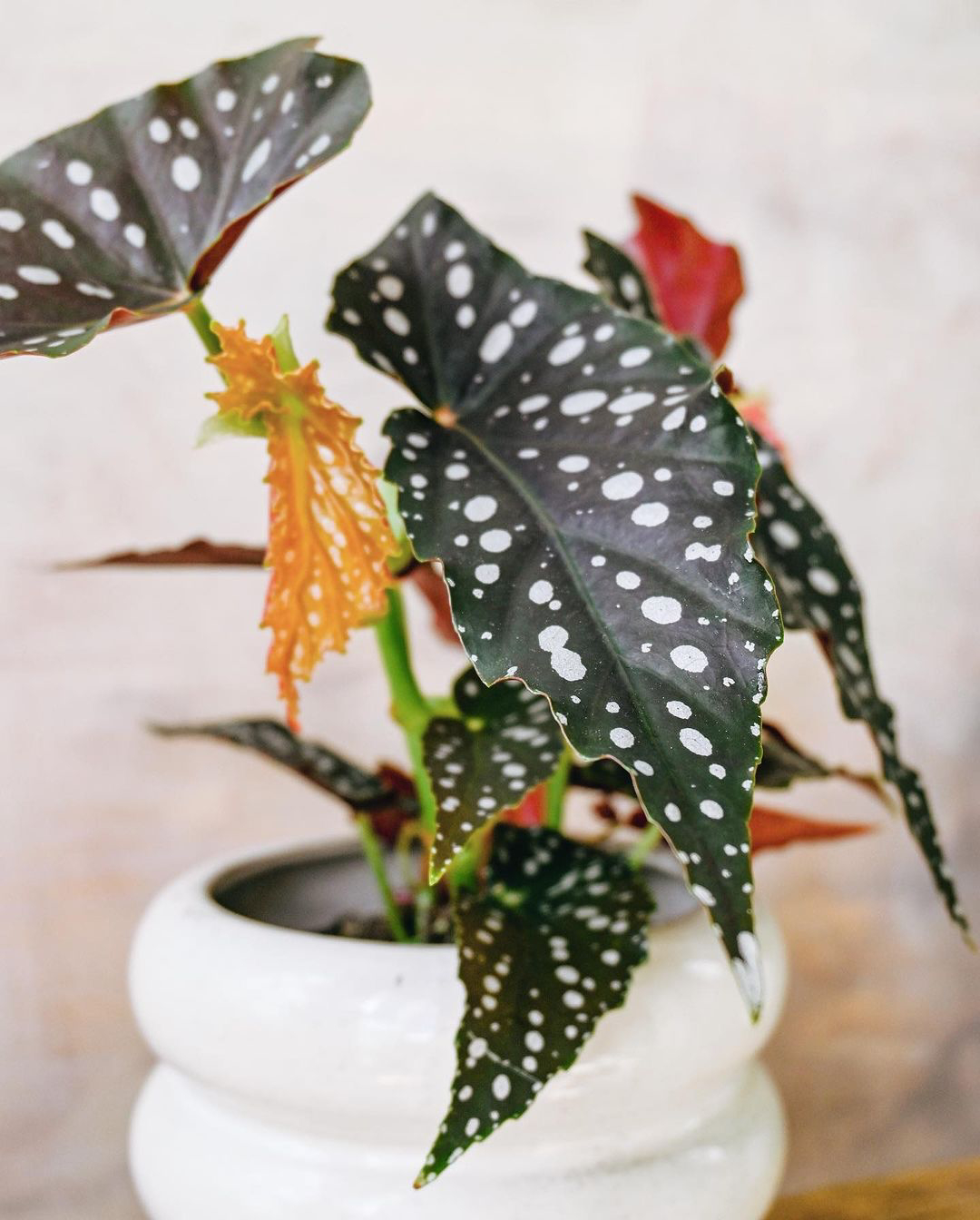
Type of Pot
When choosing a pot for your Polka Dot Begonia, envision selecting one that complements both its aesthetics and practical needs. Here are some considerations:
- Size Matters: Opt for a pot that allows for some room for your begonia’s roots to grow but isn’t excessively large. A pot that’s about 1-2 inches larger in diameter than the current one is usually sufficient.
- Drainage is Essential: Ensure the pot has drainage holes to prevent waterlogged soil, which can harm your plant. Proper drainage is crucial to avoid root rot.
- Material: Visualize a pot made of porous material like terracotta or ceramic. These materials help regulate moisture and provide stability for your plant.
Choose a pot made of porous material like terracotta or ceramic
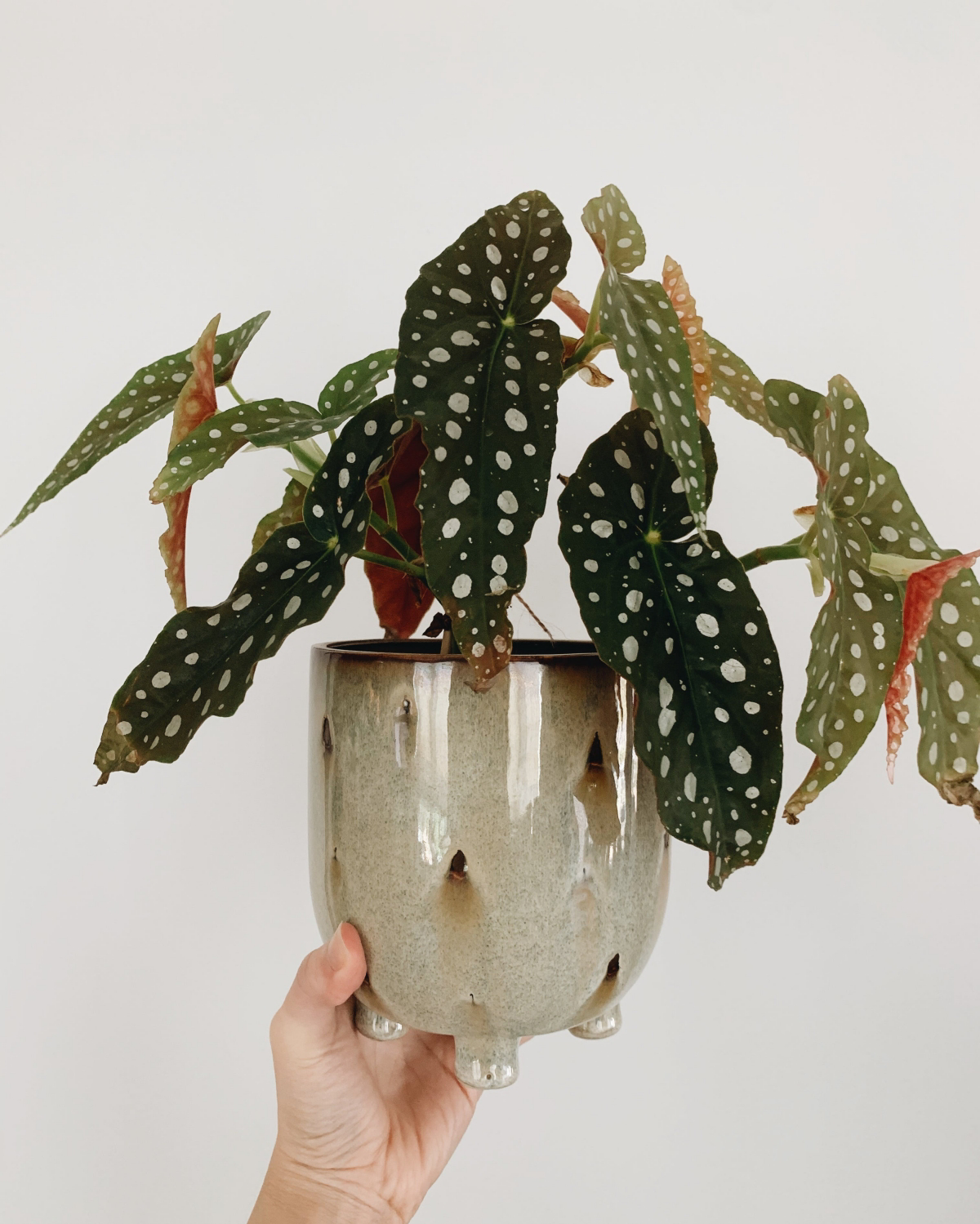
Repotting
Repotting your Polka Dot Begonia is akin to upgrading its living quarters. Here’s how to do it:
- Assess the Need: Younger begonias may require repotting every 2-3 years, while older ones can go longer without a move. Repot when you notice that the plant has outgrown its current container or when the roots start to become root-bound.
- Choose the Right Time: Envision repotting your begonia during the growing season, typically in spring or early summer. This allows it to recover and adapt to its new environment more effectively.
- Gentle Transition: When repotting, gently remove your plant from its current pot, taking care not to damage the roots. Shake off excess soil, inspect the roots for any signs of disease or rot, and trim away any damaged or excessively long roots.
- Select the New Pot: Picture placing your begonia in a slightly larger pot with fresh, well-draining potting mix. Ensure the new container has proper drainage.
- Replant Carefully: Imagine placing your begonia in the center of the new pot and filling the space around it with fresh potting mix. Press the soil down gently to secure the plant.
- Watering After Repotting: Water your newly repotted begonia thoroughly, allowing excess water to drain. Keep it in a location with bright, indirect light for a few weeks to help it acclimate to its new home.
Repot when you notice that the plant has outgrown its current container
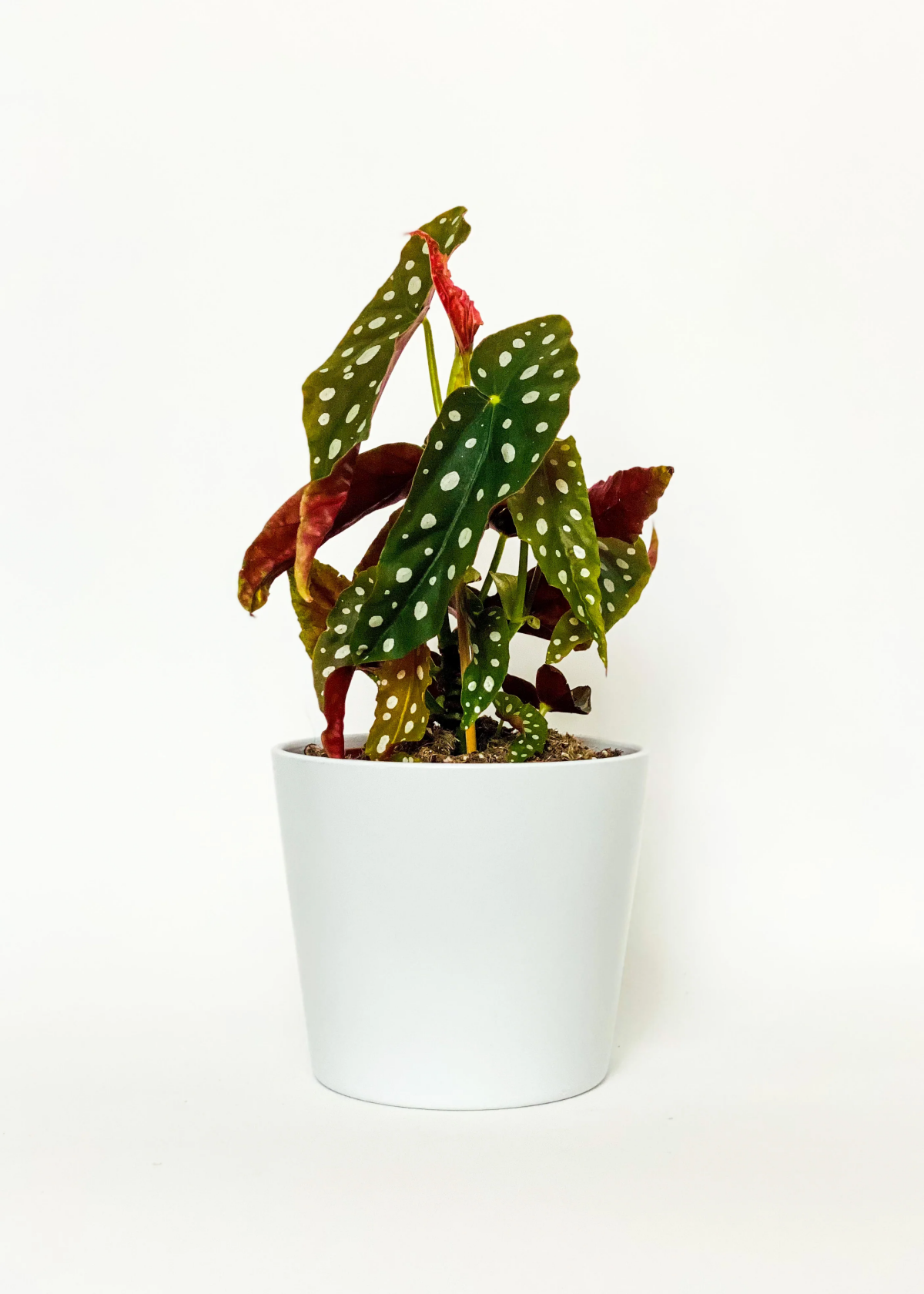
Propagation
Propagating your Polka Dot Begonia is a rewarding way to expand your plant collection or share the beauty of these charming plants with friends and fellow plant enthusiasts. Here’s how to do it:
- Take a Cutting: Visualize selecting a healthy stem with at least one leaf and a node (a small bump on the stem where leaves and roots grow). Using clean, sharp scissors or pruning shears, snip the stem just below a leaf node.
- Rooting in Water: Imagine placing the cutting in a glass or jar with enough water to submerge the node but not the entire leaf. Place the container in a location with bright, indirect light and change the water every few days to keep it fresh. Roots should begin to develop in a few weeks.
- Rooting in Soil: Alternatively, envision planting the cutting directly into a small pot with well-draining potting mix. Water it lightly and cover the pot with a plastic bag or a plastic dome to create a mini-greenhouse effect. Keep the soil consistently moist, and roots should form within a few weeks.
- Transplanting: Once the roots are well-established, picture transplanting your new Polka Dot Begonia into a slightly larger pot with regular potting mix. Continue to care for it as you would for a mature plant.
Propagation allows you to enjoy the satisfaction of nurturing new begonias and sharing the joy of these delightful plants with others.
Propagating your Polka Dot Begonia is an easy way to expand your plant collection
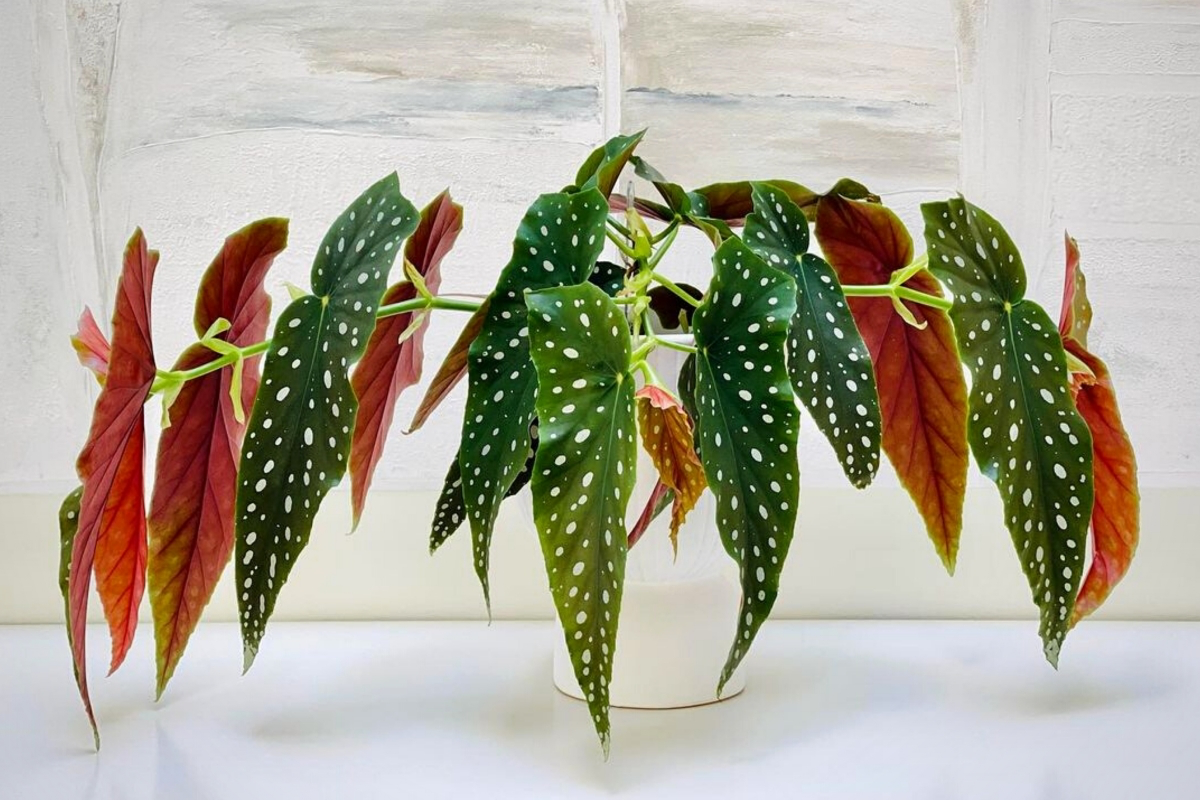
Pests
While your Polka Dot Begonia is a resilient beauty, it’s not immune to the occasional pest. Here’s how to address them:
- Spider Mites: Imagine identifying spider mites as tiny, reddish-brown or greenish pests that leave fine webbing on your plant. To combat them, mist your begonia regularly to increase humidity, and wipe the leaves with a damp cloth. You can also use neem oil or insecticidal soap to control infestations.
- Mealybugs: Envision mealybugs as small, cottony pests that cluster on the leaves and stems. Remove them carefully with a cotton swab dipped in rubbing alcohol or soapy water. Neem oil or insecticidal soap can also be effective in eliminating mealybugs.
By mastering these additional aspects of Polka Dot Begonia care, you’ll become a seasoned gardener, and your begonia will flourish under your nurturing touch. Enjoy the journey of tending to this living masterpiece, and let its charm brighten your world.
Make sure to inspect your plant for pests like mealybugs and spider mites

Conclusion
In the delightful world of indoor gardening, the Polka Dot Begonia reigns as a regal, yet approachable, choice for plant enthusiasts of all levels. As we wrap up our journey through its care, envision your home transformed into a haven of artistry, where lush green leaves adorned with silver polka dots dance in the gentle embrace of your care. Owning a Polka Dot Begonia is not just about acquiring a plant; it’s about embracing a living work of art that purifies the air, adds elegance to your décor, and provides a therapeutic connection with nature. Whether you’re a seasoned plant aficionado or a novice with a budding green thumb, this begonia welcomes you into its world with open leaves, ready to grace your life with its beauty. So, fellow plant enthusiasts, let’s take the knowledge we’ve gathered here and embark on our own journeys with the Polka Dot Begonia. May your homes be filled with the charm and serenity of this remarkable plant, and may your care be rewarded with flourishing foliage and joyful moments. Happy gardening!
Now you know everything about the Polka Dot Begonia!
